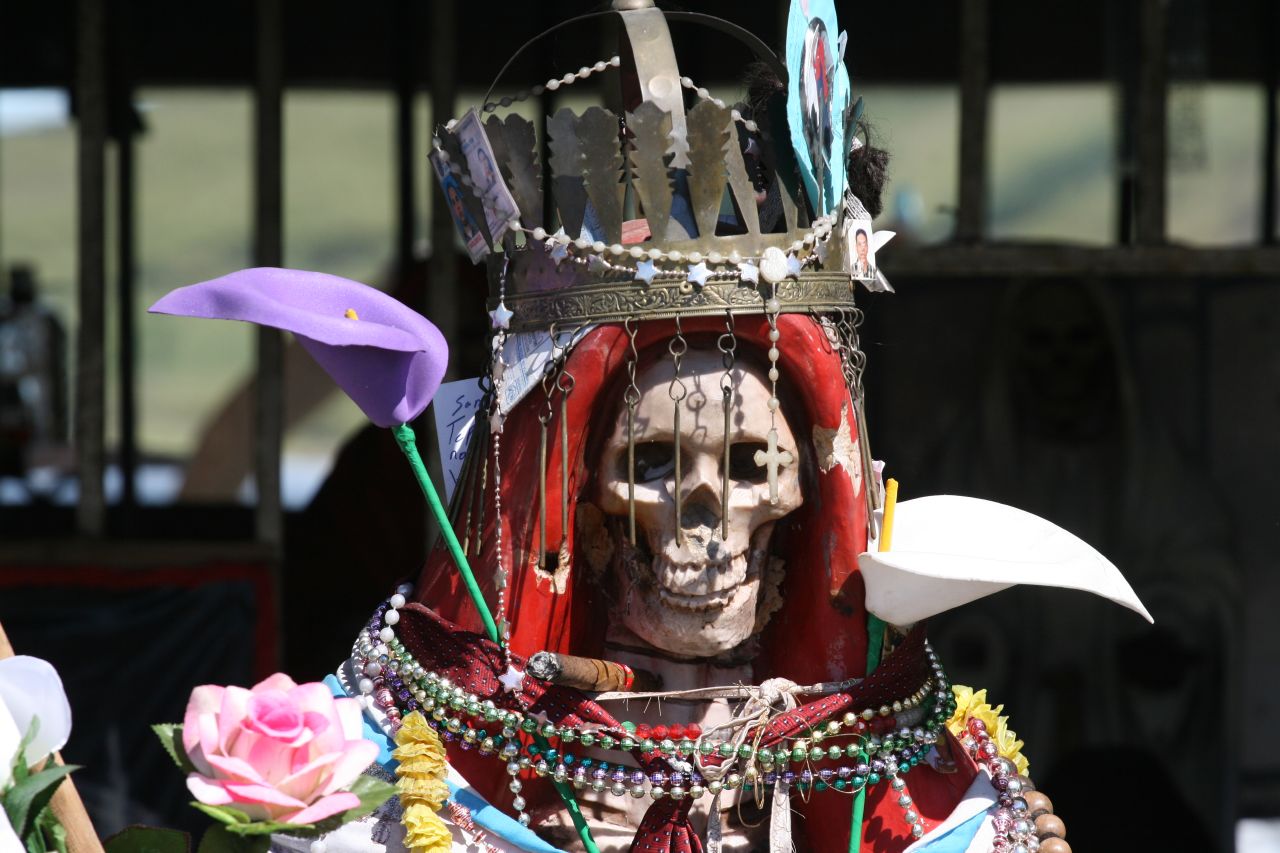Cristina Balli is moving. She’s gently packing the altar she had in her office.
Balli is the outgoing president of a nonprofit called Texas Folklife. Her altar is more chic-modern than traditional.
The altar freaks some people out. “I really have to find a special bag for the Santa Muerte,” she says.
The centerpiece in her altar is the statue of a skeletal woman dressed as a virgin – her name is Santa Muerte, or Holy Goddess of Death. Even she has a hard time admitting she worships the goddess of death.
“It’s a stigmatized devotion, made fun of,” Balli says. “You can be labeled as a narcotraficante and it’s in the fringes.”
Santa Muerte became more visible as Mexico’s cartel drug culture became more visible. Mexican drug lords worship the goddess out in the open. They’ve even commissioned worship songs like this one:
“I have no idea whether heaven or hell are real,” the song says, “but the one sure thing I’ll have in this world is you, holy mother of death.”
But Santa Muerte is still a fringe faith. Andrew Chesnut is a scholar and author of the only book in English about Santa Muerte, “Devoted to Death: Santa Muerte, The Skeleton Saint.” Chestnut says it has spread like wildfire since 2001.
“I’m in four different Facebook groups of almost exclusively white American devotees of Santa Muerte,” Chesnut says. “Some of them live in the middle of the country in places like Ohio, Virginia, Nebraska – yet are already devotees of death.”
Chesnut has also learned of a growing number of devotees in Italy, the Philippines, Australia and countries in Africa – some 12 million people worldwide.
Worship services vary in scope and reach. In Mexico, they are massive street celebrations with touches reminiscent of traditional Catholic processions.
In Texas, worshippers stay to themselves. Chesnut says the religion is becoming a force to be reckoned with here, thanks to the protection of the First Amendment.
“You legally can actually start up a church of Santa Muerte here in the United States,” Chesnut says, “unlike Mexico, where since 2005 it’s actually illegal to start up a church and call it Santa Muerte.”
Santa Muerte is hitting the mainstream, too. Icons appear in popular television shows like Breaking Bad and on supermarket shelves across the United States.
For Balli, its appeal came from the familiar rituals of her childhood Catholic faith, intertwined with something unexpected.
“I come at it from a different angle,” Balli says. “From the study of women in mythology – the feminine sacred energies that have always been present but that we haven’t necessarily learned about, because of a lot of the patriarchal religions. But it’s not a hierarchical system, like the church for example.”
She says it’s a more realistic approach to faith. For those who fear it, Santa Muerte is a cult, too modern to properly call a tradition. Yet the worship of death is part of Mexico’s ancestral history. And as we have seen in other border crossings, it’s difficult – if not impossible – to contain.














